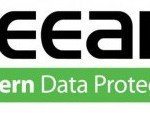Elastifile has launched its software-only, scale-out, elastic and flash-native solution that delivers hyperscale efficiency to enterprises and cloud service providers.
The Elastifile Cloud File System frees data from its traditional hardware and site silos, with unprecedented scale and consistent, all-flash performance across a true global namespace to consolidate and migrate any workloads, whether on-premises or in the public cloud.
“The Elastifile Cloud File System provides a new primary storage and data management option, while also providing cloud-like elastic efficiency through its OpEx pricing model based on consumption,” said Henry Baltazar, Research Director, 451 Research. “A distributed file system with advanced features such as QoS allows for the kind of scalability and elasticity that’s become so imperative to enterprises that are moving to and maintaining hybrid cloud deployments. Automatic migration between on-prem and public clouds helps enable the level of agility that clients are demanding, and which is not found in traditional software defined storage environments.”
Elastic Cloud File System (ECFS) it’s a scalable data platform, supporting:
- 1000s of nodes, 100000s of clients
- 100s thousands FS (data containers), unlimited files/directories
- Exabyte scale capacity, 10s millions IOPS (and above)
To learn more about it you can watch their presentation at latest Storage Field Day
From an architectural perspective, ECFS also offers:
- Enterprise Level Features, including non-disruptive upgrades (NDUs), n-way redundancy, self healing, snapshots, sync/async DR
- Storage Interfaces based on NFSv3/v4, SMB2/3, S3, HDFS
It also has cloud-friendly features, including:
- Multi-tenancy, QoS, Hot add/remove nodes/capacity
- Snapshot shipping to S3 (“CloudConnect”)
- ILM/HSM/Dynamic tiering to other sites/clouds, Object/S3
- Multi-site (geographically distributed access)
The idea to have cross-cloud data fabric it’s great to provide data mobility, and of course also application mobility, but also a full control of where are placed.











